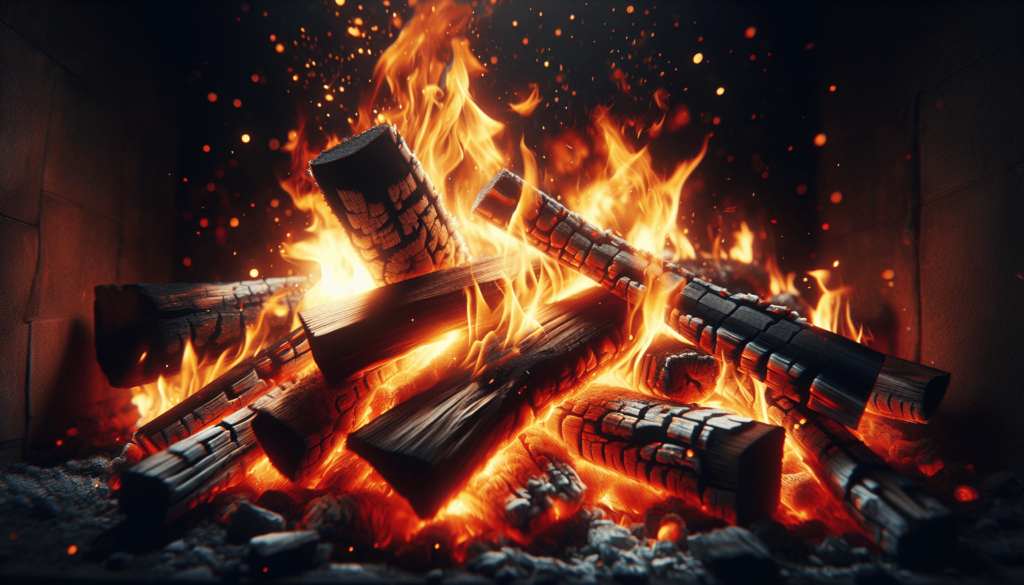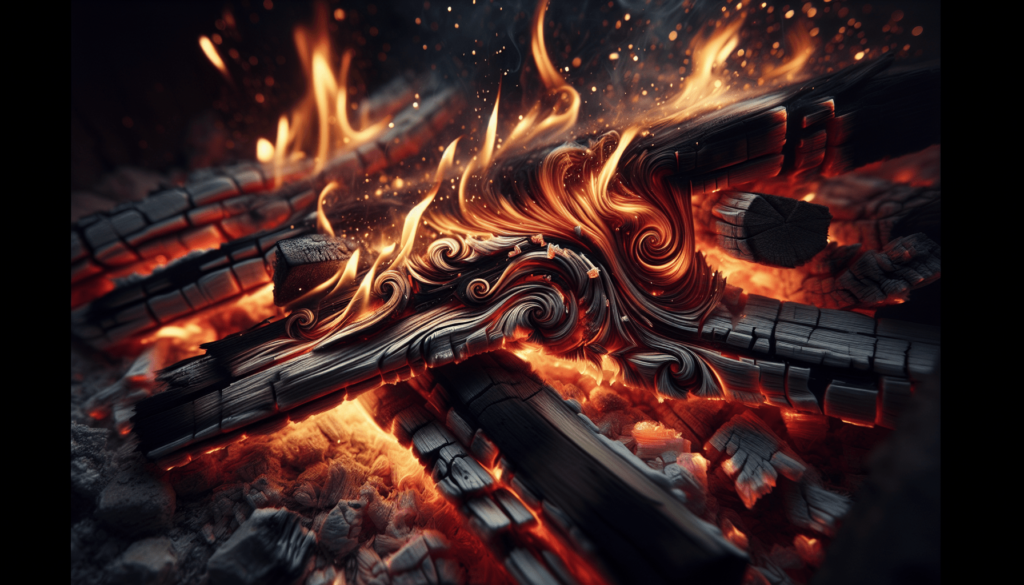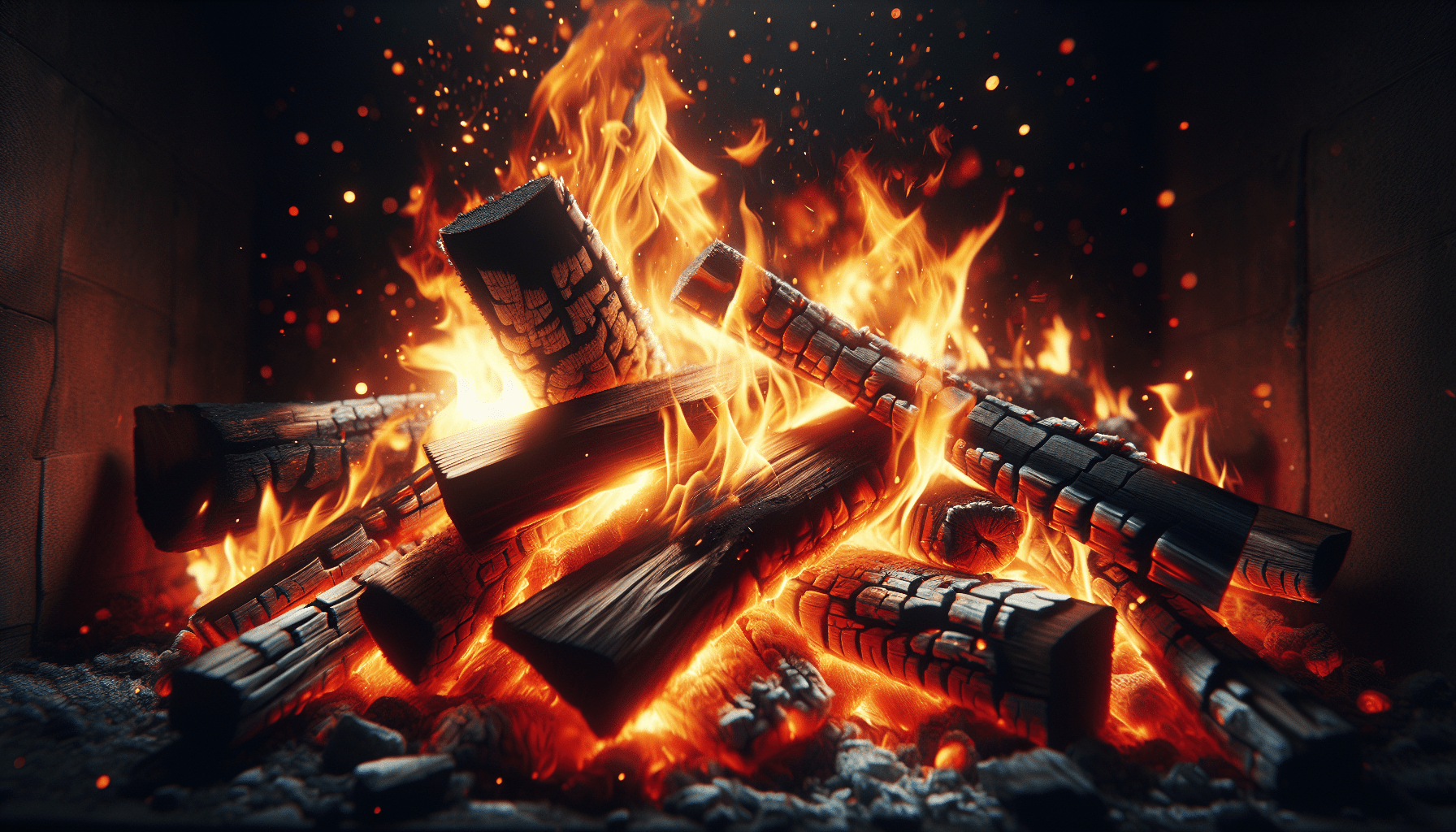Ever found yourself staring at a crackling fireplace, wondering exactly what kind of reaction is taking place? Well, you’re in the right place to satisfy that curiosity. Burning wood is something we humans have been doing for millennia, but it’s amazing how little we think about the science behind it. Let’s unpack the details.

The Basic Science Behind Burning Wood
Let’s start with the basics. Burning wood is a chemical reaction, but what kind? The process of burning wood is known as combustion. Specifically, it’s an exothermic reaction, meaning it releases heat.
Exothermic Reactions: Warming Up the Concept
When we say “exothermic,” we mean a reaction that gives off heat. It’s like the fireplace is putting on a warm blanket for you, literally warming up the room. In technical terms, exothermic reactions release energy usually in the form of heat or light. This is different from endothermic reactions, which absorb energy. Think of an endothermic reaction as a metaphorical energy sponge.
The Combustion Equation: A Look Under the Hood
What’s actually going on chemically when wood burns? The main elements involved in wood are carbon and hydrogen, along with some oxygen. When you burn wood, these elements react with the oxygen in the air. The simplified combustion equation looks something like this:
[ C_xH_yO_z + O_2 \longrightarrow CO_2 + H_2O + Energy ]
Let’s break it down:
- ( C_xH_yO_z ): This represents the wood, which is primarily made up of carbon (C), hydrogen (H), and oxygen (O).
- ( O_2 ): Oxygen from the air.
- ( CO_2 ): Carbon dioxide, a gas produced during the reaction.
- ( H_2O ): Water vapor, another product of the reaction.
- Energy: This is the heat and sometimes light that you see and feel.
So when wood burns, it essentially reacts with oxygen to produce carbon dioxide, water vapor, and energy.
Wood: The Star of the Show
Not all wood is created equal, at least not when it comes to burning. The type of wood, its water content, and other factors can influence how it burns. Hardwood and softwood differ in their combustion characteristics.
Hardwood vs. Softwood: Not Just a Furniture Decision
The choice between hardwood and softwood isn’t just important for your DIY coffee table; it also affects how your fire burns. Hardwoods like oak and maple are denser and generally burn hotter and longer. Softwoods like pine, on the other hand, burn faster and can produce more smoke. This is because softwoods have more resin, which ignites quickly but doesn’t sustain the fire as long.
The Role of Water Content: Why Dry Wood is Happy Wood
Ever tried to burn wood that’s still a bit green? It’s frustrating, right? That’s because water content plays a crucial role in how efficiently wood burns. Wood with high moisture content, known as green wood, requires more energy to evaporate the water before it can actually burn, making it less efficient and smokier. Kiln-dried or seasoned wood, on the other hand, has had most of its moisture removed, making it far more efficient and cleaner-burning.
Here’s a quick comparison:
| Type of Wood | Burn Time | Smoke Production | Ideal Moisture Content |
|---|---|---|---|
| Hardwood | Long | Low | 15-20% |
| Softwood | Short | High | 15-20% |
| Green Wood | Very Short | Very High | 30-50% |
| Seasoned Wood | Long | Low | 15-20% |
The Three Stages of Combustion
Burning wood isn’t a one-step process; it happens in stages. Understanding these stages can help you manage a fire more effectively, whether you’re camping or just keeping warm on a winter’s night.
Stage One: Ignition
This is where it all begins. The ignition stage is when the wood starts to heat up and reach the point where it can start to burn. You’ll typically need kindling and maybe some newspaper to get it started. The wood needs to reach a temperature of about 572°F (300°C) for pyrolysis to begin.
Stage Two: Flaming Combustion
Once the fire gets going, you move into the flaming combustion stage. At this point, the wood is breaking down into volatile gases, which react with oxygen to produce flames. This is the most intense part of the fire, producing most of the heat and light you see.
Stage Three: Smoldering
After the flames die down, you’re left with glowing embers. This is the smoldering stage, where the remaining charcoal burns slowly. It’s not as flashy as the flaming stage, but it can still produce a fair amount of heat.
The Byproducts of Burning Wood
Combustion doesn’t just produce heat; it also creates various byproducts. Knowing what these are can be important for both health and environmental reasons.
Carbon Dioxide and Water Vapor: The Main Players
The most abundant byproducts are carbon dioxide (CO_2) and water vapor (H_2O). These are pretty straightforward and are generally harmless at the levels produced by a typical fire.
Particulates and Smoke: The Nuisances
Particulates are tiny bits of material that can get into your lungs and cause respiratory issues. Smoke can also carry volatile organic compounds (VOCs) and other harmful substances. This is why it’s generally a good idea to burn wood in a well-ventilated area or use a quality fireplace or wood stove that minimizes smoke production.
Creosote: The Silent Threat
If you’ve got a chimney, creosote is your enemy. This sticky, tar-like substance can build up on the walls of your chimney and is highly flammable. Keeping your chimney clean is crucial to prevent chimney fires.

Environmental Considerations
Burning wood is often touted as a more environmentally friendly option compared to fossil fuels, but it’s not without its own set of environmental concerns.
Carbon Footprint: A Mixed Bag
It’s true that burning wood releases CO_2, a greenhouse gas. However, the argument is that trees absorb CO_2 as they grow, so burning wood is part of a closed carbon cycle. On the flip side, burning wood inefficiently can produce a lot of smoke and other pollutants.
Sustainable Sourcing: Think Before You Burn
If you’re harvesting your own wood, make sure you’re doing it sustainably. Overharvesting can lead to deforestation, which has far-reaching impacts on ecosystems and carbon sequestration.
Modern Innovations: The Science of Better Burning
Technology isn’t just for your smartphone and laptop. Modern wood stoves and fireplaces have come a long way in making wood burning more efficient and less polluting.
Catalytic vs. Non-Catalytic Stoves: Which One’s for You?
Catalytic wood stoves use a catalyst to burn smoke and gases that would otherwise escape up your chimney. This makes them more efficient and reduces smoke. Non-catalytic stoves, while generally simpler and less expensive, rely on the design of the firebox to achieve efficient burning.
EPA-Certified Stoves: A Quality Stamp
If you’re in the market for a new stove, look for EPA-certified models. These stoves meet rigorous emission standards and are designed to burn wood more cleanly and efficiently.
Practical Tips for Efficient Wood Burning
Now that we’ve covered the science and the stages, let’s talk about some practical tips for getting the most out of your fire.
Choosing the Right Wood
As we mentioned earlier, hardwoods like oak and maple are excellent choices for long-lasting fires. Make sure the wood is adequately seasoned (dry) for best results.
Building the Fire
Start with kindling and smaller pieces of wood. As the fire gets going, add larger logs. This helps the fire burn more efficiently and reduces smoke.
Maintaining the Fire
Once your fire is going, manage it by adding wood in a way that maintains airflow. Avoid packing the firebox too tightly, as this can smother the flames and produce more smoke.
Clean Your Chimney
Regular maintenance of your chimney is crucial to prevent creosote buildup and reduce the risk of chimney fires. An annual inspection and cleaning are recommended, especially if you’re burning wood frequently.
The Future of Wood Burning
With advancements in technology and a growing focus on sustainability, the future of wood burning looks promising.
Hybrid Systems: The Best of Both Worlds
Some modern stoves and fireplaces are designed to work with other heating systems, such as solar or geothermal. These hybrid systems can provide the ambiance and warmth of wood fires while utilizing renewable energy sources for overall heating.
Smart Technology: High-Tech Fires
Believe it or not, there are now smart devices for wood stoves and fireplaces. These can monitor temperature and airflow, making real-time adjustments to optimize burning efficiency and reduce emissions.
Final Thoughts
Burning wood is more than just lighting a match and watching the flames dance. It’s a complex chemical reaction with a fascinating interplay of science and nature. From understanding the stages of combustion to making informed choices about the type of wood and stove you use, there are many ways to enhance your experience and ensure that your wood-burning practices are efficient, safe, and environmentally friendly.
By grasping the science behind it all, not only do you become a more savvy fire starter, but you also gain a deeper appreciation for this age-old process that has warmed our homes and hearts for generations. So the next time you sit by the fire, take a moment to ponder the marvelous chemistry at work.

